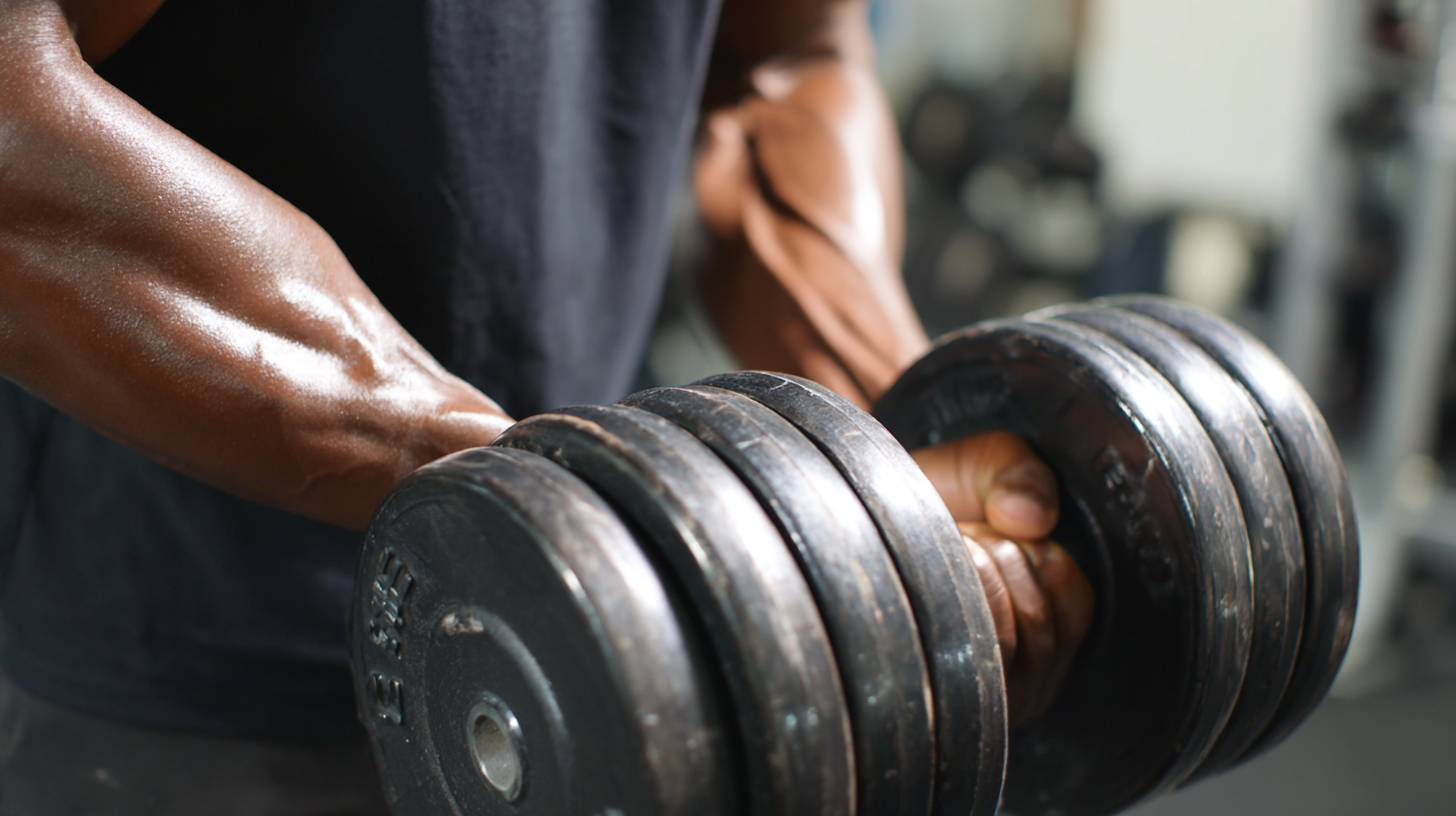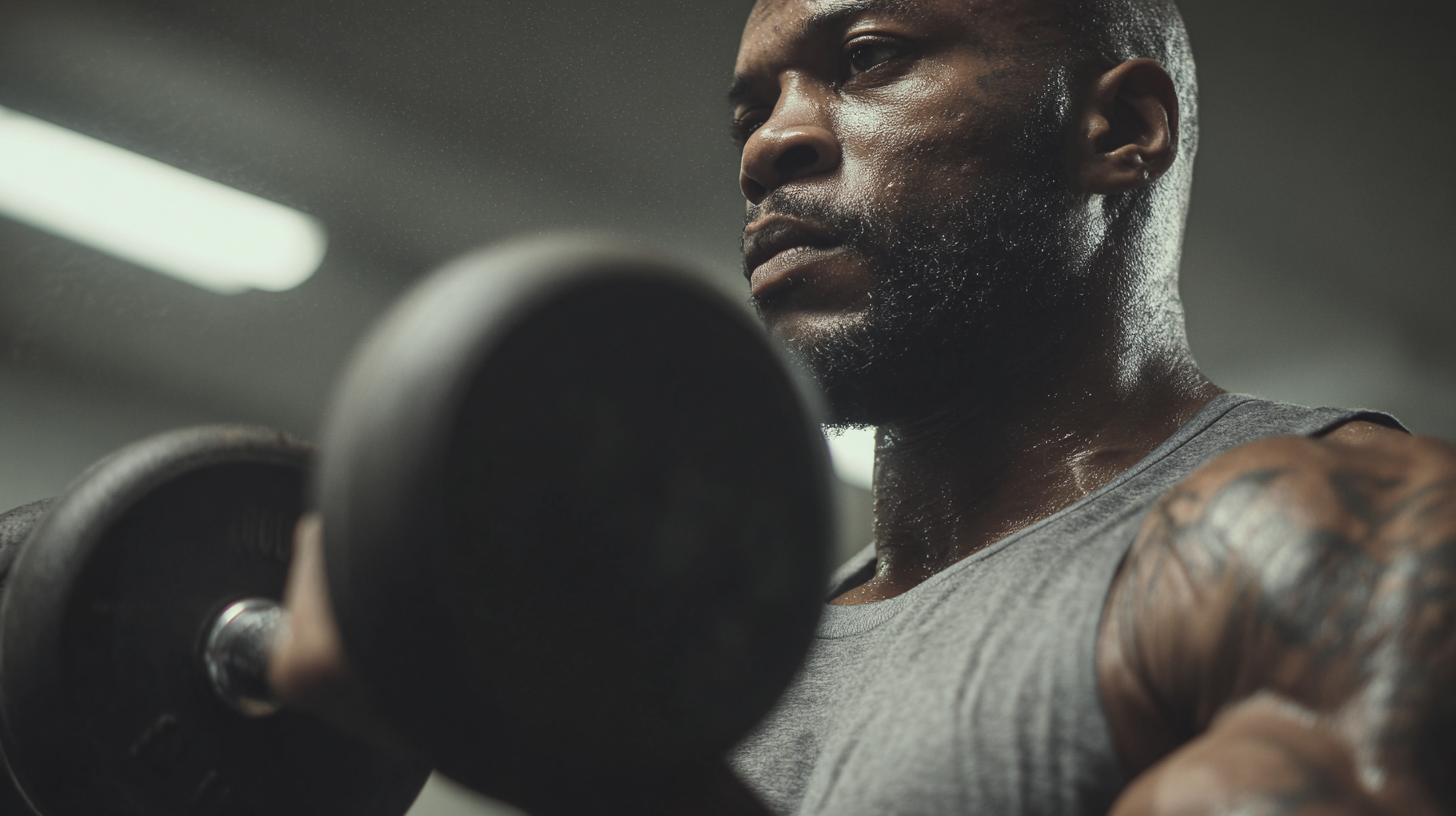
-
Home
-
Products
-
About Us
-
News
-
Contact Us
Leave Your Message

In recent years, the popularity of weight dumbbell workouts has surged as more individuals recognize their effectiveness in building strength and enhancing overall fitness. According to the International Sports Sciences Association (ISSA), strength training, including the use of weight dumbbells, can increase metabolic rate by up to 15%, allowing for more efficient calorie burning even at rest.
 Furthermore, a study published in the Journal of Strength and Conditioning Research indicates that incorporating weight dumbbells into a workout regimen can lead to significant improvements in muscle strength and hypertrophy compared to bodyweight exercises alone.
This blog aims to guide you through essential techniques for mastering weight dumbbell workouts, ensuring you maximize your efforts while minimizing the risk of injury.
Whether you are a beginner or an experienced lifter, understanding the right methods can transform your fitness journey and yield remarkable results.
Furthermore, a study published in the Journal of Strength and Conditioning Research indicates that incorporating weight dumbbells into a workout regimen can lead to significant improvements in muscle strength and hypertrophy compared to bodyweight exercises alone.
This blog aims to guide you through essential techniques for mastering weight dumbbell workouts, ensuring you maximize your efforts while minimizing the risk of injury.
Whether you are a beginner or an experienced lifter, understanding the right methods can transform your fitness journey and yield remarkable results.
When it comes to strength training, dumbbells are cornerstone tools that offer a wide range of benefits for both beginners and fitness enthusiasts. Understanding the basics of dumbbell training can significantly enhance workout effectiveness. According to a report by the American Council on Exercise (ACE), incorporating dumbbells into your routine can increase overall strength by 20-30% compared to body-weight exercises alone. This is particularly beneficial for targeting specific muscle groups and improving balance and coordination through unilateral training.
One essential technique to master with dumbbells is proper form to avoid injury and maximize gains. Research from the National Academy of Sports Medicine (NASM) indicates that maintaining a neutral spine and using a controlled range of motion is crucial. For instance, a study found that lifters who focused on form while using dumbbells achieved a 25% higher rate of muscle hypertrophy over twelve weeks than those who rushed through their reps. This highlights how foundational techniques not only enhance the workout experience but also ensure long-term progress in strength training. Embracing these essential techniques will set the stage for effective and safe workouts with dumbbells.
| Exercise Name | Target Muscle Group | Recommended Sets | Recommended Reps | Tips |
|---|---|---|---|---|
| Bicep Curl | Biceps | 3 | 10-15 | Keep elbows close to your body. |
| Tricep Extension | Triceps | 3 | 10-12 | Focus on squeezing the tricep at the top. |
| Dumbbell Squats | Quads, Hamstrings | 4 | 10-15 | Maintain a straight back while squatting. |
| Dumbbell Bench Press | Chest | 3 | 8-12 | Don’t lock your elbows at the top. |
| Dumbbell Rows | Back | 3 | 10-15 | Pull with your back, not your arms. |
Dumbbells are a versatile piece of equipment essential for effective full-body strength training. According to a report from the National Strength and Conditioning Association, incorporating dumbbell exercises into your routine can significantly enhance muscle strength, as they engage stabilizer muscles more effectively than machines. This makes dumbbells a favorite among fitness enthusiasts aiming for balanced growth and improved coordination.
Key exercises such as the dumbbell squat, bench press, and bent-over row not only target major muscle groups but also promote functional movements. Research suggests that performing compound movements with dumbbells can increase metabolic rate and muscle hypertrophy, with studies indicating that individuals can see improvements in strength gains by up to 20% when consistently training with free weights.
**Tip:** Start with lighter weights to master your form before progressing. This approach not only minimizes the risk of injury but also ensures optimal muscle engagement. Additionally, incorporate a variety of grips and stances to challenge your body in different ways, promoting better overall strength and stability.

When it comes to weight training with dumbbells, mastering proper form and technique is crucial for both maximizing effectiveness and preventing injury. One of the most common mistakes is using an incorrect grip. Beginners often hold dumbbells too tightly or with an improper hand position, which can lead to wrist strain. Instead, aim for a neutral grip—palms facing inward—for most exercises. This alignment allows for better control and minimizes unnecessary tension in your joints.

Another frequent error is neglecting to maintain a stable core during lifts. Engaging your core muscles not only provides balance and stability, but it also protects your back from strain. Many individuals inadvertently arch their backs or lean too far forward, particularly during exercises like dumbbell rows or shoulder presses. Instead, focus on keeping your spine neutral and your shoulders retracted. This alignment fosters a safer workout environment and enhances the effectiveness of each movement. By being mindful of these common mistakes, you can significantly improve your dumbbell training routine and achieve greater results.
When it comes to creating a balanced workout plan, incorporating dumbbells can significantly enhance both strength training and overall fitness. According to a report by the American College of Sports Medicine (ACSM), strength training using free weights, such as dumbbells, can improve muscle strength and endurance by approximately 25-30% in just a few weeks of consistent training. This finding highlights the importance of integrating dumbbells into workout routines to achieve quicker and more effective results.
To maximize the benefits of dumbbell workouts, it’s essential to develop a balanced plan that targets all major muscle groups. The National Strength and Conditioning Association (NSCA) advocates for a well-rounded approach in resistance training, recommending at least two days of strength workouts per week. Incorporating exercises like dumbbell squats, bench presses, and deadlifts can lead to improved muscle hypertrophy and joint stability. Furthermore, research suggests that using dumbbells can enhance neuromuscular coordination, as they require greater stabilization compared to fixed-weight machines. By carefully structuring your workouts to include a mix of these exercises, you can create an effective and balanced regimen that promotes long-term health and physical performance.
When it comes to progressing in your dumbbell workouts, understanding how to increase intensity is key to achieving your fitness goals. One effective method is to gradually increase the weight of your dumbbells. Start by choosing a weight that challenges you for 8-12 repetitions, and once you can comfortably perform more than 12 reps, it’s time to step up. This straightforward progression technique ensures that your muscles continuously adapt and grow stronger.
Another strategy to elevate the intensity is to manipulate your workout variables. Consider shortening your rest periods between sets or incorporating supersets—performing two exercises back-to-back without rest. This not only keeps your heart rate elevated but also maximizes your time in the gym. Additionally, experimenting with different lifting tempos can make a significant difference; try slowing down the eccentric (lowering) phase of your movements to increase time under tension, which can lead to greater muscle development.
Finally, don’t underestimate the power of variation. Regularly changing your exercises, such as swapping dumbbell curls for hammer curls or incorporating unilateral movements like single-arm rows, can stimulate different muscle fibers. This variety keeps your workouts fresh and challenging, ensuring continued progress and preventing plateaus.